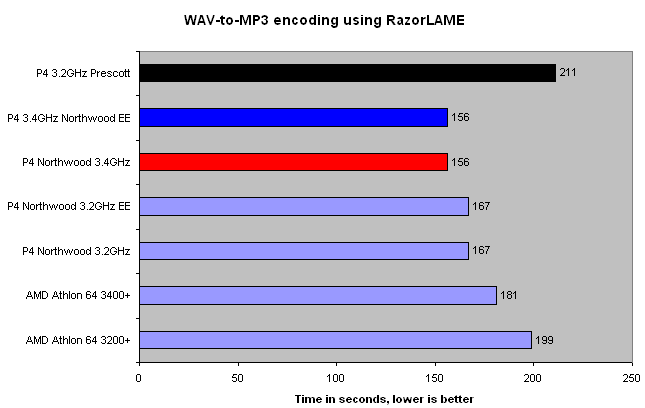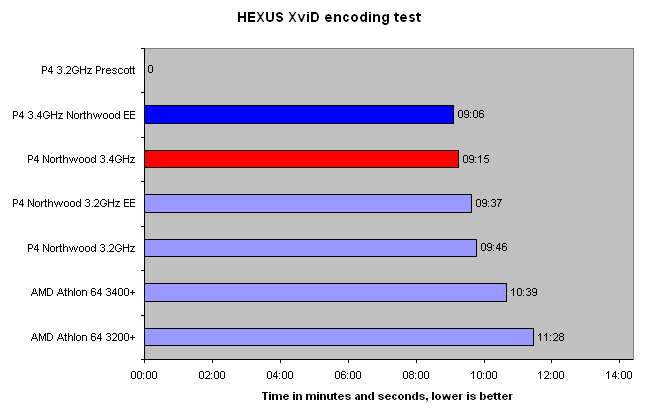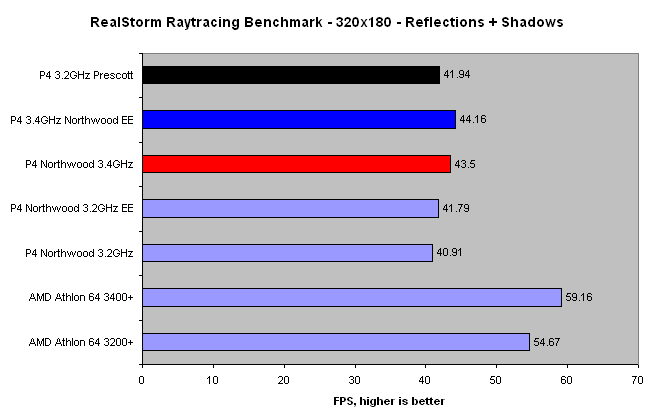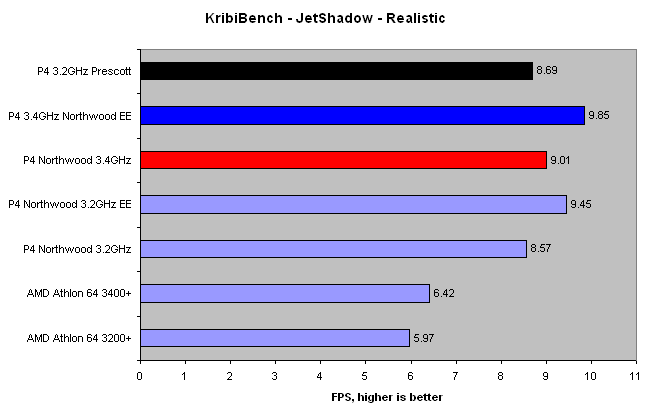WAV crunchin', Video Encoding, KribiBench, Raytracing

The Prescott also has a hard time of it when encoding 607MB of WAV files into 192kb/s MP3 format. It's not just a little slower, it's abysmally so. It's a test that doesn't benefit from the Prescott's improvements, unless it is conducted with an eye towards hyper-threading. The 3.4GHz Extreme and regular editions, by dint of their clock speed, further extend the P4's usual benchmarking lead here.

The XviD CODEC (build 24062003-1, Koepi's) was used to encode the first vob of Sleepy Hollow (DVD) using the Gordian Knot package and an average bitrate of 1433kBit/s. No sound was encoded. Unfortunately ,for reasons given in the notes' section, we were unable to complete testing with the Prescott CPU. What we can infer is that the Extreme Edition's cache does marginally help in this test. Both EEs are a few seconds faster than their regular counterparts. It's no surprise that the 3.4GHz EE wins the day. AMD's Athlon 64s aren't too far behind, though.

The Prescott finally does something well. It's faster than both its Northwood and Extreme Edition 3.2GHz counterparts in Realstorm's raytracing benchmark. It can't match the 3.4GHz CPUs' speed and falls way short of the prodigious raytracing ability of the Athlon 64s.

Another decent showing from the three new P4s in KribiBench. KribiBench is an easy-to-use benchmark from Adept Development. It's a software (read subsystem) renderer that's capable of rendering amazingly complex scenes. The benchmark can be downloaded from here and features models with 16.7 billion polygons. The test is the rather easier JetShadow model with the realistic setting. SSE2 technology and a large on-chip cache appear to be the performance drivers here.









